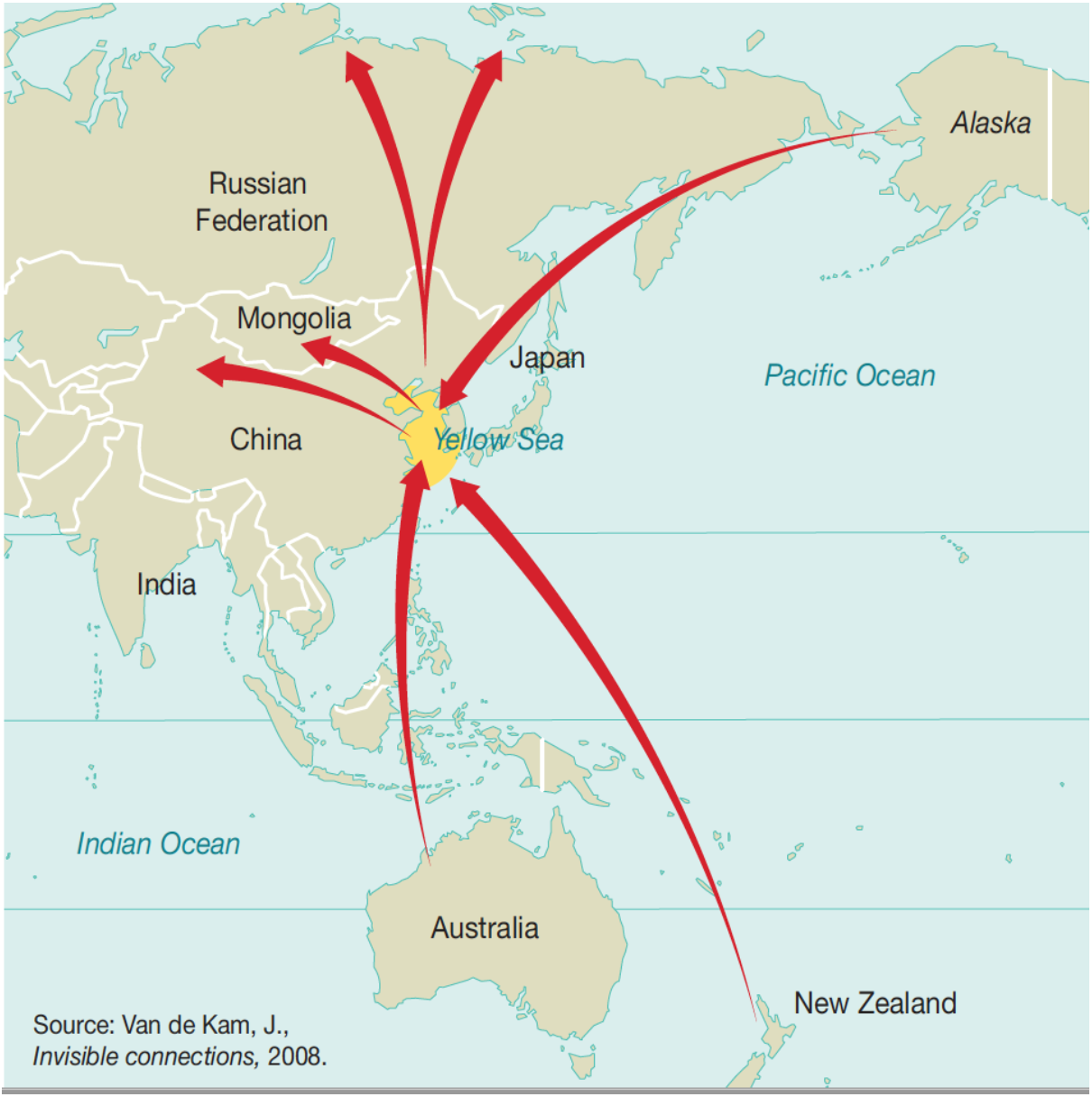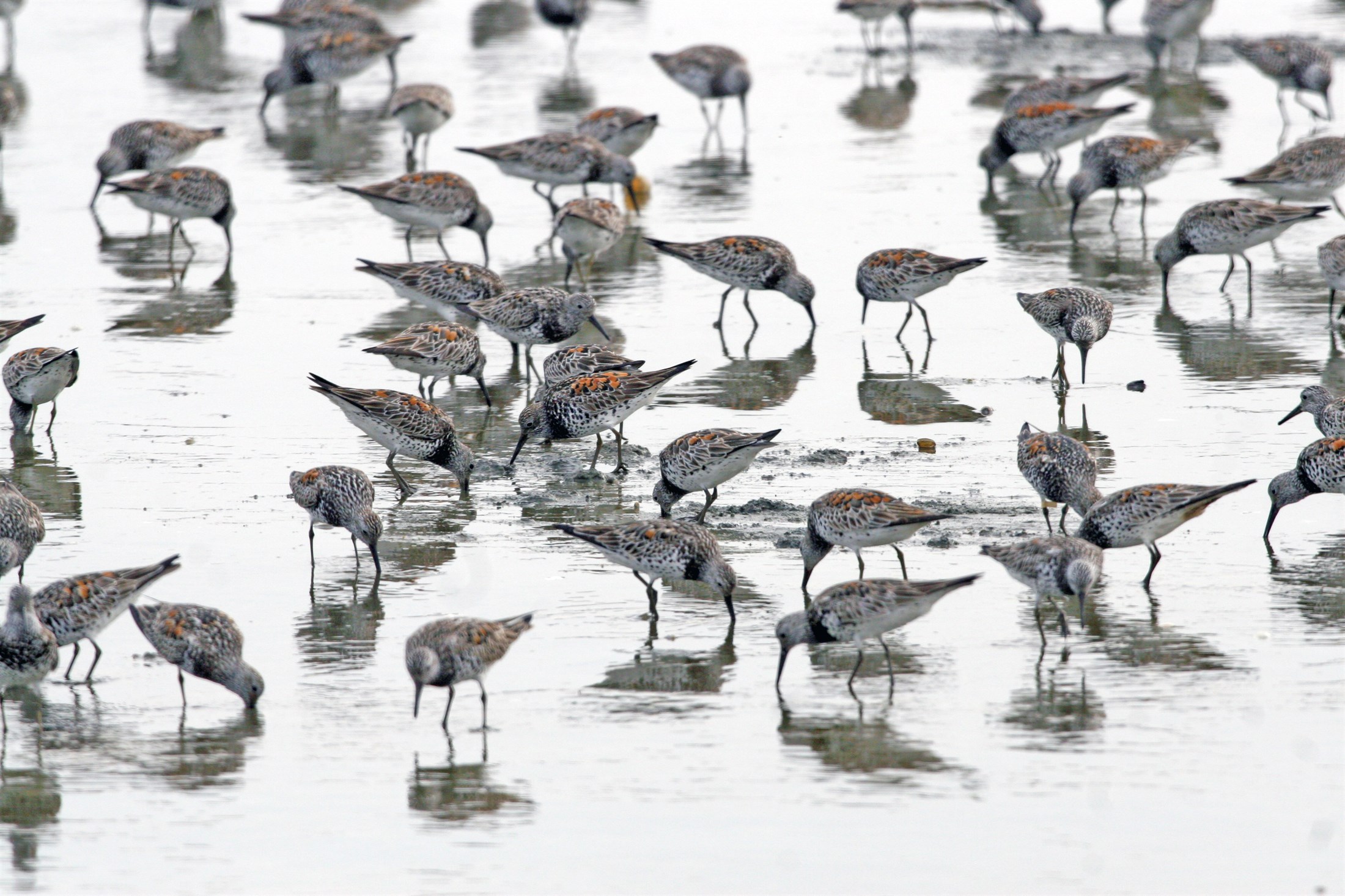Three years ago LT&C reported on the World Conservation Congress calling for World Heritage nomination for the intertidal zone of the Yellow Sea. And last year on the good news that China will halt land reclamation along its coast. Two weeks ago LT&C reported having joined a coalition of 62 urging for UNESCO World Heritage status of Chinese parts of the Yellow Sea. Now, at World’s Environment Day (July 5), the positive news from session 43 of the UNESCO World Heritage Committee, meeting June 30 – July 10 in Baku, Republic of Azerbaijan, reached us: the nomination of the „Migratory Bird Sanctuaries along the coast of the Yellow Sea-Bohai Gulf of China“ has passed Phase 1. China is now allowed to prepare Phase 2 and is encouraged to „coordinate its plans for nominations with other States Parties in the flyway, in relation to the potential for future transboundary serial nominations, and/or extensions, that more fully reflects the habitat needs and patterns of use of migratory birds across the wider Yellow Sea area.“
There are clear signs of a positive movement in the right direction. And if the goal will be reached to get this area of crucial importance for millions of Arctic shorebirds on the East Asian-Australasian Flyway protected, it will be due to a huge international coalition joining forces here. As one of the various actions 62 organisations and other representatives of nature conservation, including LT&C, had signed a letter to the UNESCO World Heritage Committee requesting final steps to implement this status for the „Migratory Bird Sanctuaries along the Coast of Yellow Sea, Bohai Gulf of China“ as Phase I on the way to a more comprehensive and trans-boundary approach, including all three countries, apart from China also the two Koreas.

Initiatives to protect the internationally important but highly threatened tidal flats of the Yellow Sea of China and Korea came among other from the LT&C-Example Wadden Sea. As the trilateral Wadden Sea achieved the status of a World Heritage Site, and its tidal flats are of crucial importance for millions of Arctic shorebirds using the East-Atlantic Flyway, so has the Yellow Sea a comparable role for the East Asian-Australasian Flyway.
The Wadden Sea would not have achieved its current protection status, including national parks and a UNESCO-approved Word Heritage Site, if millions of tourists had not been educated over time in the information centers and guided tours on the mudflats about its significant natural values.
The LT&C Wadden Sea example has now the potential to be reproduced in the Yellow Sea of China and Korea. It was
Most importantly, the East Asian-Australasian Flyway Partnership (EAAFP) has become a powerful example of
We also like to thank Nicola J Crockford from RSPB/Birdlife International for her great coordination work to bring 62 organisations and other representatives of nature conservation together to sign the letter to the World Heritage Committee, which can be downloaded here. The decisions of the 43rd session of the



